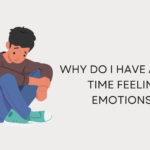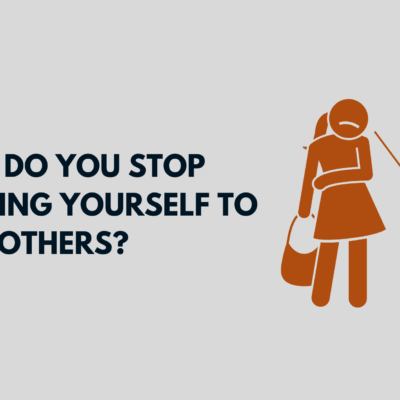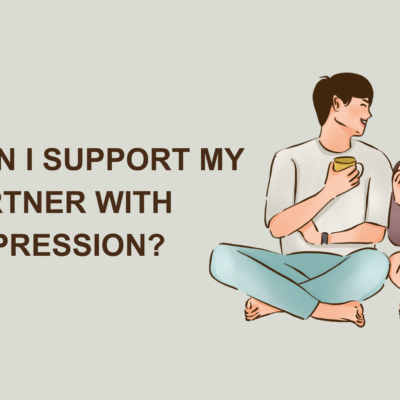Why Do I Cry When I Get Mad: Crying is often thought of as a response to sadness, grief, or even joy, but for many people, tears also come when they feel intense anger or frustration. If you’ve ever found yourself tearing up or sobbing in the middle of an argument or while trying to stand your ground, you may have wondered: Why do I cry when I get mad?
This reaction can be confusing and even frustrating. You may feel like your tears send the wrong message—that you appear weak or overly sensitive when in reality, you’re simply angry. The truth is, crying during anger is a deeply human and natural response that has roots in biology, psychology, and emotional processing. In this article, we’ll explore the reasons behind this emotional reaction, the science of why anger can lead to tears, and how to manage these moments in healthier ways.
Also Read:
1. The Connection Between Anger and Tears
At first glance, anger and crying may seem like opposites. Anger is often associated with aggression, strength, and outward energy, while crying is tied to vulnerability and inward release. Yet the two emotions are more closely linked than we think.
When we experience anger, our bodies undergo a surge of physiological changes: adrenaline spikes, heart rate increases, and stress hormones flood the system. These same stress responses also activate parts of the brain that control emotional expression. For some people, the overflow of emotion is too strong to be contained, and the body releases it through tears.
Crying in this context isn’t about weakness—it’s the body’s attempt to release the pressure of overwhelming feelings.
2. Biological Reasons You Cry When You’re Angry
a) The Role of the Nervous System
Anger activates the sympathetic nervous system, which prepares the body for “fight or flight.” You may feel your muscles tense, your breathing quicken, and your pulse race. However, when the intensity of these feelings doesn’t have a clear outlet—such as yelling, physical exertion, or resolution—the body seeks another release. Tears become that release valve, helping reduce emotional overload.
b) The Amygdala’s Influence
The amygdala, the brain’s emotional processing center, plays a key role in both anger and sadness. When overactivated, it may trigger tear production as part of the body’s instinctive stress regulation. Crying, in a way, is the brain’s method of calming the storm inside.
c) Hormonal Factors
Stress hormones like cortisol also contribute to this reaction. Elevated cortisol levels increase emotional sensitivity, making tears more likely. Interestingly, research suggests crying may even help regulate cortisol levels, leaving you calmer afterward.
3. Psychological Reasons Behind Angry Tears
a) Difficulty Expressing Anger
Some people cry when they’re mad because they haven’t learned to express anger directly. This often develops in childhood, especially if anger was discouraged or punished in the family environment. As adults, these individuals may default to crying instead of shouting or confronting others, because tears feel like a “safer” release.
b) Emotional Overwhelm
Anger is often a secondary emotion—it masks other vulnerable feelings like hurt, fear, or disappointment. When these underlying emotions surface alongside anger, the mix can feel overwhelming, and tears become the outlet for all of it at once.
c) Sensitivity to Conflict
Highly empathetic or conflict-averse individuals may cry during anger because confrontation feels threatening. Tears then become a physical sign of stress, anxiety, or even helplessness in the face of tension.
4. Social and Cultural Factors
Our society often teaches that crying is a “weak” response, especially in contexts like anger or conflict. Men, in particular, may be socialized to suppress tears, while women may be stereotyped as “too emotional.” This stigma can make people feel ashamed of crying when mad, intensifying the frustration.
However, crying is not a weakness. It is a universal human behavior, found across all cultures and ages. In fact, it can serve an important role in communication. Tears may signal to others that you’re experiencing distress, potentially prompting empathy or diffusing a tense situation.
5. Situations Where Crying During Anger Commonly Occurs
- Arguments with loved ones – Emotional bonds can heighten sensitivity, making anger more tearful.
- Workplace conflicts – Pressure to remain professional may make tears feel embarrassing, yet the stress triggers them anyway.
- Feeling misunderstood – Anger mixed with frustration at not being heard often leads to tears.
- Bottling up emotions – If feelings build up without release, even minor triggers can cause angry tears.
6. Is Crying When Angry Harmful?
Not at all. Crying when you’re angry is not harmful in itself—it’s a normal and natural response. The potential downside comes from how it impacts communication. For example:
- Others may misinterpret your tears as sadness instead of anger.
- You may feel you’ve lost credibility in expressing your point.
- It could prevent you from clearly articulating your needs.
Still, these are challenges of perception rather than flaws in your emotional system. The goal isn’t to stop crying altogether but to understand it and channel it more effectively.
7. How to Cope With Crying When You’re Mad
If you find yourself frequently crying when angry and it interferes with communication or self-confidence, there are strategies to help:
a) Pause and Breathe
Deep breathing activates the parasympathetic nervous system, helping calm the surge of stress hormones. A few slow, intentional breaths can reduce the intensity of both anger and tears.
b) Acknowledge Your Emotions
Remind yourself that crying is a natural response. Instead of fighting it, silently acknowledge: “I’m angry, and my body is releasing it through tears.” This acceptance can reduce the frustration of crying itself.
c) Use Physical Outlets
Anger is an energizing emotion. Releasing it physically—through exercise, punching a pillow, or even walking briskly—can redirect the intensity so it doesn’t spill out in tears.
d) Practice Assertive Communication
If tears often derail your ability to express anger, practicing assertiveness can help. Use “I” statements (e.g., “I feel hurt when…”) to convey your feelings without aggression. Over time, this can reduce the pressure that leads to tears.
e) Reframe Your Perspective
Instead of viewing tears as weakness, see them as evidence of emotional intensity. Tears show you care deeply about the situation—which isn’t a flaw but a sign of emotional depth.
8. When to Seek Support
Crying when angry is usually normal, but professional support may help if:
- It happens so frequently that it interferes with relationships or work.
- Your anger or crying feels uncontrollable.
- You suppress emotions for long periods and then experience intense outbursts.
- Past trauma contributes to emotional overwhelm.
A therapist can help you explore the roots of your emotional responses, teach regulation techniques, and guide you in healthier expression of anger.
9. Turning Angry Tears Into Strength
While society may stigmatize crying during anger, it can actually be reframed as a strength:
- It shows authenticity. You’re allowing yourself to feel emotions fully.
- It fosters empathy. Tears may soften conflicts and invite others to respond with compassion.
- It prevents repression. Crying helps release emotional energy, reducing the risk of bottled-up anger turning destructive.
By shifting how you interpret your tears, you can embrace them as part of your unique emotional expression rather than something to “fix.”
10. Practical Tips to Build Emotional Resilience
If you’d like to reduce the frequency of crying when mad while still honoring your emotions, here are practical steps:
- Journal regularly – Writing about your emotions helps you process them before they reach boiling point.
- Practice mindfulness – Meditation or grounding exercises increase awareness of triggers and give you space to respond calmly.
- Improve emotional vocabulary – The more accurately you can label your feelings (frustration, disappointment, injustice), the less overwhelming they become.
- Set boundaries – Address small issues early instead of letting resentment build until it explodes in tears.
- Cultivate self-compassion – Instead of judging yourself for crying, remind yourself that you’re human and allowed to feel.
Conclusion
Crying when you’re mad is not a flaw, weakness, or sign of immaturity—it’s a natural emotional response deeply rooted in the way our brains and bodies handle stress. Anger and tears are not opposites; they are intertwined expressions of overwhelming emotional intensity.
While it can sometimes feel inconvenient or misunderstood, crying in moments of anger is ultimately a release mechanism, a signal of emotional depth, and even an opportunity for connection. By understanding the biological, psychological, and social reasons behind angry tears, and by learning strategies to regulate them, you can navigate these moments with greater confidence and self-compassion.
So the next time you ask yourself, “Why do I cry when I get mad?” remember: it’s because you are human, and your emotions are powerful enough to demand expression. Tears are not your weakness—they are your strength in disguise.






